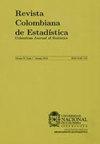贝叶斯方法下均值控制图的评价
Q3 Mathematics
引用次数: 0
摘要
以前的一项基于预测极限的贝叶斯方法评估平均值控制图的研究是以既不考虑先前信息也不考虑样本信息的方式进行的。开发这项工作是为了进行更完整的研究,以评估先验分布与样本信息相结合的影响。假设要控制的质量特性可以通过正态分布建模,并考虑两种情况:已知方差和未知方差。建立了贝叶斯共轭模型,因此均值的先验分布是正态的,并且在方差未知的情况下,方差的先验分布被定义为逆伽马(Γ,Γ)。后验预测分布也是正态分布,用于建立图表的控制极限。信号可传播性用于测量控制图在第二阶段的性能,在先前分布的不同规格以及校准样本和未来样本的两种不同尺寸下计算预测极限。模拟研究评估了三个方面:样本量的影响、先验平均值与校准样本平均值的距离,以及总体平均值的先验分布信息量的指标。此外,在方差未知的情况下,我们研究了参数Γ值变化的影响。我们发现,如果先前的分布信息量很大,那么误报率可能会很大,这反过来会导致ARL(平均运行长度)偏差图,也就是说,当过程受到控制时,没有给出ARL的最大值。此外,我们发现,当校准和未来样本的大小较小时,特别是当先验信息量很大时,先验分布对控制图功率的影响很大。最后,关于参数Γ的影响,我们发现该值越小,这意味着信息量较小的先验分布,控制图的幂就越低。本文章由计算机程序翻译,如有差异,请以英文原文为准。
Evaluation of the Mean Control Chart Under a Bayesian Approach
A previous study on the evaluation of control charts for the mean with a Bayesian approach, based on predictive limits, was performed in such a way that neither prior nor sample information was taken into account. This work was developed to make a more complete study to evaluate the influence of the combination of the prior distribution with the sample information. It is assumed that the quality characteristic to be controlled can be modeled by a Normal distribution and two cases are considered: known and unknown variance. A Bayesian conjugate model is established, therefore the prior distribution for the mean is Normal and, in the case where the variance is unknown, the prior distribution for the variance is defined as the Inverse-Gamma(ν, ν). The posterior predictive distribution, which is also Normal, is used to establish the control limits of the chart. Signal propability is used to measure the performance of the control chart in phase II, with the predictive limits calculated under different specifications of the prior distributions, and two different sizes of the calibration sample and the future sample. The simulation study evaluates three aspects: the effects of sample sizes, the distance of the prior mean to the mean of the calibration sample, and an indicator of how informative is the prior distribution of the population mean. In addition, in the case of unknown variance, we study what is the effect of changing values in the parameter ν. We found that the false alarm rate could be quite large if the prior distribution is very informative which in turn leads to an ARL (average run length) biased chart, that is, the maximum of the ARL is not given when the process is under control. Besides, we foundgreat influence of the prior distribution on the control chart power when the size of the calibration and future samples are small, particulary when the prior is very informative. Finally, regarding the effect of the parameter ν, we found that the smaller the value, which means having a less informative prior distribution, the lower the power of the control chart.
求助全文
通过发布文献求助,成功后即可免费获取论文全文。
去求助
来源期刊

Revista Colombiana De Estadistica
STATISTICS & PROBABILITY-
CiteScore
1.20
自引率
0.00%
发文量
0
审稿时长
>12 weeks
期刊介绍:
The Colombian Journal of Statistics publishes original articles of theoretical, methodological and educational kind in any branch of Statistics. Purely theoretical papers should include illustration of the techniques presented with real data or at least simulation experiments in order to verify the usefulness of the contents presented. Informative articles of high quality methodologies or statistical techniques applied in different fields of knowledge are also considered. Only articles in English language are considered for publication.
The Editorial Committee assumes that the works submitted for evaluation
have not been previously published and are not being given simultaneously for publication elsewhere, and will not be without prior consent of the Committee, unless, as a result of the assessment, decides not publish in the journal. It is further assumed that when the authors deliver a document for publication in the Colombian Journal of Statistics, they know the above conditions and agree with them.
 求助内容:
求助内容: 应助结果提醒方式:
应助结果提醒方式:


